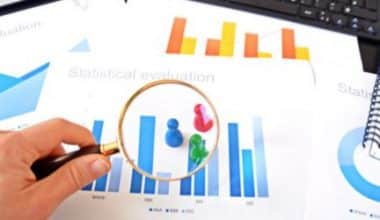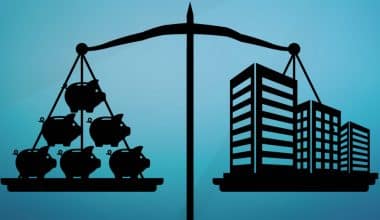In economics, supply refers to the quantity of a specific good or service that providers offer to customers for a given price at a particular moment. We’ll further define supply function and explain the various types, including how the supply chain works, in this article.
What Is Supply?
Supply is a basic economic notion which refers to the total amount of a particular commodity or service that is made available to consumers. When shown as a graph, supply can refer to the quantity that is offered at a particular price or the quantity that is offered over a range of prices. This is strongly related to the demand for an item or service at a particular price; all other things being equal, the supply offered by producers will increase if the price rises because all businesses aim to maximize profits.
Understanding Supply
Economic supply is a complicated concept with numerous mathematical formulas, real-world applications, and influencing elements. Although everything that is in demand and sold in a competitive market can be referred to as supply, the terms goods, services, or labor are most frequently used.
The cost of the good is one of the most significant elements that influence supply. In general, the supply will increase if the price of a commodity rises. The price that consumers are willing to pay and the price that producers or retailers wish to charge frequently have an inverse relationship.
When a technological development improves the quality of a good being supplied or when there is a disruptive innovation, such as when a technological development makes a good obsolete or less in demand, the conditions of the manufacturing of the item in supply are equally important. Government rules may also have an impact on supply; for example, environmental laws pertaining to oil production may have an impact on the availability of such oil.
In microeconomics, a variety of mathematical formulas are used to model supply. The relationship between supply and the influencing factors is expressed by the supply function and equation. A supply curve contains a plethora of data, including movements (resulting from changes in price), shifts (resulting from changes unrelated to changes in the price of the commodity), and price elasticity.
What Is The Supply Function?
A supply function is a numerical representation of the relationship between the anticipated quantity (quantity demand) of a good or service, its price, and other relevant variables, such as the costs of associated goods and inputs. Individual dependent variables and independent variables abound in a supply function. By looking at the relationship between the independent variable and the supply, a supply equation can be planned. It can also be determined by determining whether the relationship is one that is positive or negative. For instance, the market cost or supply and price are typically not correlated. However, there is a positive relationship between supply and innovative improvement; for instance, increased supply is demonstrated by greater innovation and technology. The formula for the supply function is given as:
Sx = f (Px, P0, Pf, St, T, O)
Where:
Sx = Supply of the specified good x.
Px = Cost of the specified good x.
P0 is the cost of related items.
Pf = Costs of production factors.
St = state of technology
T = stands for tax policy.
O = The company’s goal.
The Law of Supply
A foundational idea in economics is the law of supply. It claims that a rise in a good or service’s price causes a rise in the supply of those things. The amount of goods or services that suppliers are willing and able to offer to clients is referred to as supply. According to the legislation, when prices go up, things are more lucrative as long as other variables, such production costs, don’t change. Therefore, the possibility of greater revenues encourages companies to offer more of these goods. Existing suppliers might boost the supply of products that are more lucrative at the expense of those that are less lucrative. Additionally, additional providers can come onto the market, expanding the overall supply even more.
How Does The Law of Supply Work?
In accordance with the law of supply, an increase in price has the potential to boost supply of labor and services as well as goods. For instance, if workers are paid more per hour, they could be more inclined to put in more time. The quantity of qualified job applicants may increase as a result of more people enrolling in college programs for professions with relatively high incomes, such as software engineering.
In reality, the relationship between supply and demand frequently determines prices. The law of supply and demand, a related economic theory, explains how this operates. Prices typically rise as demand for goods and services increases. This gives suppliers a reason to raise their supply. However, as the cost of those goods and services rises, fewer people will purchase them. According to the law of supply and demand, this will cause free markets to evolve in the direction of an equilibrium point where the cost and amount of supply exactly meet consumer demand.
Factors That Affect Supply
If all other variables remain constant, the law of supply states that rising prices will lead to a rise in the supply of goods or services. Supply is actually influenced by a wide range of additional factors, many of which are dynamic. Here are some of them
#1. Projections of demand and prices.
Many companies don’t just focus on what customers are now buying; they also base their production plans on projections of future demand and pricing. Business demand estimates can be made more accurate with the use of enterprise resource planning software by taking seasonality and economic growth into account. Businesses may also reserve stock if it is anticipated that a product’s price will rise so they can sell it at a higher profit margin down the road.
#2. Cost of production.
According to the rule of supply, businesses have an incentive to increase supply as prices rise because they can raise profits by selling more products or services. That might not be the case, though, if price increases are due to rising production costs. The price rise does not serve as a motivator to produce additional pizzas if a pizzeria increases the price of a slice by 50 cents because the price of the tomatoes used to prepare the sauce increased by 50 cents. The motivation to produce more pizzas increases, however, if production costs decrease and prices stay the same.
#3. Competition.
Even if prices are not rising and demand is stable, new providers could nevertheless enter the market. These new vendors frequently try to undercut the prices of established vendors.
#4. Technology
Technology can help businesses produce and sell more goods at a reduced cost, increasing the quantity that is accessible.
#5. Transportation.
The capacity of a business to increase its supply of goods may be impacted by transportation delays or increased shipping prices. If products can’t get from warehouses to store shelves, buyers can’t buy them, therefore they don’t contribute to the market supply.
#6. Availability of labor and raw commodities.
A company can want to raise the supply of a product but be unable to do so due to its inability to pay for the necessary raw materials or hire the labor force to manufacture it.
#7. In some industries, government rules and subsidies have an impact on supply.
When releasing some healthcare products, for instance, businesses must adhere to stringent regulatory restrictions, which can limit the supply of these products regardless of demand. Government grants, on the other hand, help to fund the provision of various municipal transportation services.
#8. Natural calamities and the weather.
The availability of many agricultural products is significantly impacted by the weather. Crop production can be significantly reduced by a dry season or flooding.
#9. Similar items.
The supply of other items may alter if the supply of one changes. Farmers might allocate additional land to corn farming, for instance, if the market price of maize rises. As a result, they use less area to grow squash, which lowers the available supply.
#10. Company Goals
Companies may change the product supply to meet certain goals. For instance, some companies release limited-edition collectibles in sparse quantities to raise their value and appeal. On the other extreme, businesses will occasionally produce their goods in enormous quantities in order to increase their market presence and brand recognition, even if doing so doesn’t result in increased profits.
Types Of Supply
#1. Short-term Supply
The inventory that is now available for consumption is a short-term supply. When the short-term supply is depleted, consumers must wait for new production or manufacturing to start before more products can be purchased. Consumers can only purchase up to the short-term supply at once.
#2. Long-Term Supply
Long-term supply takes into account macroeconomic factors, customer demand, and the availability of materials. These elements collectively determine how a business should change its manufacturing to satisfy long-term demand. Long-term supply may only be able to rise gradually over time, but by implementing operational techniques, providers can more easily increase or decrease long-term supply.
#3. Joint Supply
Joint supply happens when the production of one good produces a byproduct of another. No matter how much of a demand there is for the byproduct good, it may still be produced and supplied to meet that demand. For instance, the creation of crude petroleum yields asphalt, kerosene, fuel oil, and gasoline. Simply put, if there is more demand for other products, the supply of one item may rise.
#4. Market Supply
Market supply is the daily flow of products, frequently with relatively brief useful lives. Grocery stores might gauge their market supply of fresh food or fish, for instance. Since more supply could be outside the farmer’s control, each of these things depends only on the supplier’s capacity to harvest these products.
#5. Composite Supply
Composite supply, as contrast to joint supply, refers to the sale of a product that combines many different items. The maximum supply is equal to the smaller of the two items, and both products must be made available at the same time. As an illustration, one business produces pints of ice cream that are offered with compostable spoons. Each item is sold together. In this case, the composite supply is equal to the lesser of the number of ice cream pints or the number of disposable spoons.
Read Also: WHAT IS THE IMPORTANCE OF MARKETING FOR BUSINESS? Explained!
Exceptions to the Law Of Supply
The law of supply may not apply in every business situation. There are numerous exceptions, or circumstances, in which the pricing has no bearing on the availability of goods and services. These are a few of the most typical.
#1. The benefits of scale.
A producer may be able to use economies of scale to lower production costs if it reaches a certain size. As a result, it could be able to raise its supply while maintaining or even lowering pricing.
#2. Change to the business plan.
A company may temporarily raise the supply of some goods at a low price if it intends to stop producing them and alter its market emphasis in order to get rid of any unsold inventory and raw materials. If a corporation needs funds right away, it may also employ this strategy as an emergency option.
#3. Monopoly.
When there is just one supplier of an item or service, the business may be able to change its supply or pricing regardless of outside influences.
#4. Affordable prices.
Businesses may expand the supply of their goods while lowering the price in order to gain market share in a highly competitive market.
#5. Dated or expired commodities.
When perishable products are getting close to their expiration date, a company might raise supply earlier in an effort to recoup some of the manufacturing expenses before the products lose their ability to be sold.
#6. Unique products.
Even if the price increases, the quantity of handmade goods or other uncommon items cannot increase since they are difficult to replicate.
#7. Inflexible supply.
Even if the price rises, it might be challenging to swiftly change the supply of many things, particularly agricultural products. Crops might take months or even years to mature and become readily available to consumers. For instance, an apple grower who expands their orchard will have to wait several years before they can begin to harvest the fruit.
Use Of Supply in Macroeconomics
The term “money supply” explicitly refers to the total amount of money and liquid assets in a nation. The supply will be examined and tracked by economists, who will develop policies and rules based on its fluctuations by regulating interest rates and other similar actions. A nation’s money supply must be carefully counted and periodically made available to the public. An excellent illustration of the significance of a nation’s money supply and the effects it has on the global economy is the European sovereign debt crisis, which started in 2009.
Another crucial idea related to supply in the modern, globally integrated world is global supply chain financing. In order to reduce total financing costs and hasten the business process, supply chain finance strives to efficiently integrate all parties involved in a transaction, including the buyer, seller, financing institution, and by extension, the supplier. Supply chain finance is influencing industries including the automotive and retail sectors and is frequently made possible by a technology-based platform.
What Is A Supply Chain?
A supply chain is a group of people and businesses responsible for producing a product and getting it to the consumer. The raw material producers are the first links in the chain, and the last is the van that delivers the finished product to the customer.
The importance of supply chain management may be seen in the reduced costs and improved productivity that come from an optimized supply network. Companies work to enhance their supply chains in order to lower costs and maintain competitiveness.
What Are the Main Models of the Supply Chain?
There are several different supply chain modeling options. The model a firm chooses will depend on how it is set up and what its unique requirements are. Here are a few illustrations:
#1. Continuous Flow Model
For businesses that generate largely the same items, this conventional supply chain model works well. The goods ought to be highly sought-after and need little to no remodeling. Because of the lack of variation, managers may shorten manufacturing times and maintain strict inventory management. Managers must routinely refill raw materials in a continuous flow paradigm to avoid production bottlenecks.
#2. Fast Chain strategy:
Businesses who market their goods in accordance with current trends benefit most from using this strategy. Businesses that employ this approach must launch their items rapidly to capitalize on the current craze. From concept to prototype to manufacturing to consumer, they must move quickly. One sector that makes use of this supply chain paradigm is fast fashion.
#3. Flexible Model
Businesses that produce seasonal or holiday goods frequently employ the flexible model. These businesses have spikes in product demand followed by protracted periods of low or no demand. The adaptable model guarantees that they can ramp up rapidly to start production and shut down successfully as soon as demand starts to decline. They need to accurately predict their need for labor, inventories, and raw supplies in order to be profitable.
What Steps Make Up a Supply Chain?
An effective supply chain starts with:
- Planning the manufacturing and inventory operations will help guarantee that supply and demand are properly matched.
- Producing or acquiring the materials required to make the finished product.
- Parts assembly and product testing.
- Putting the product in packaging for shipping or keeping it in stock.
- Delivery of the completed product to the distributor, retailer, or customer.
- Supplying assistance with customer service for returned goods.
What Are The 5 Determinants of Supply?
- The cost of the good or service.
- Cost Of Additional Related Items.
- Elements or Production Factors That Affect Price.
- Intervention with technology.
- Administrative Directives
What Are The 4 Laws Of Supply?
- The price will decrease if supply grows while demand stays the same.
- Price will increase if supply declines and demand remains constant.
- Price will rise if supply remains constant while demand rises.
- Price will decrease if demand declines but supply remains constant.
In Conclusion,
The idea of supply, or the quantity of products made available to a market for consumption, is a foundational notion in economic theory. The ideas of supply and demand work together to establish a market equilibrium that frequently determines the prices consumers pay and the supply level manufacturers aim for.
Related Articles
- SUPPLY CHAIN: Meaning, Examples, Types, Management & Issues
- What is Supply Chain Planning? Detailed Guide
- SUPPLY CHAIN ANALYTICS: Meaning, Types & Importance
- SUPPLY CHAIN VISIBILITY: Types and How To Improve Visibility






